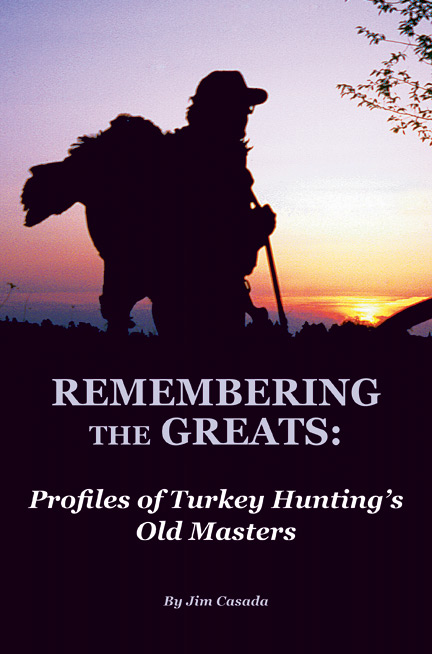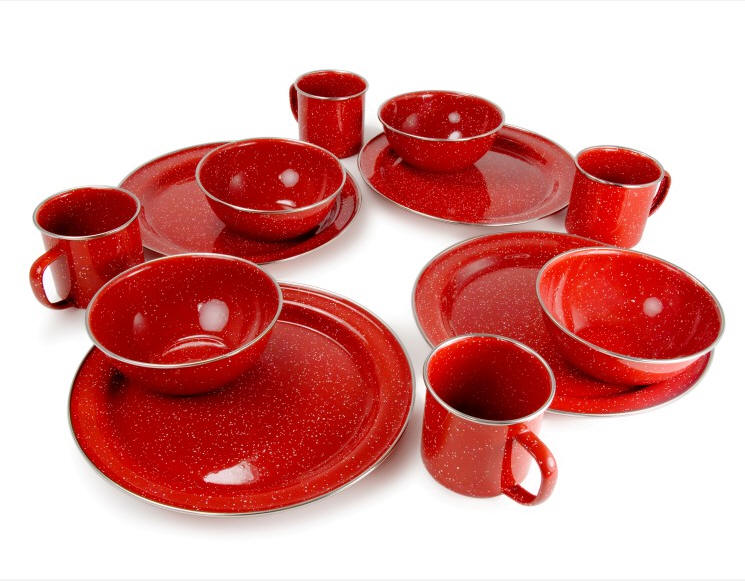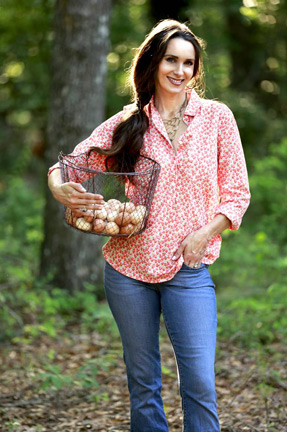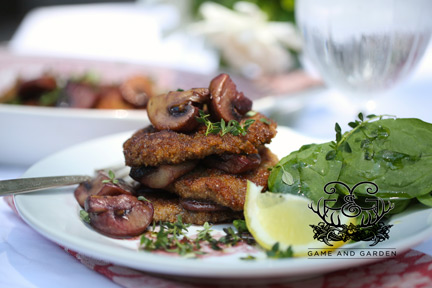|
Jim Casada Outdoors November 2015 Newsletter
Click here to view this newsletter in a .pdf with a white background for easy printing.
NOVEMBER 2015 – A TIME FOR LOOKING BACK This month’s newsletter features, as its central coverage, an article I wrote for the Smoky Mountain Times, a weekly newspaper in Bryson City, NC, the small town in the Great Smokies where I grew up. I think it will strike a nostalgic chord for many readers, and at least three folks have already found it quite appealing. They were the trio of judges in the weekly newspaper category for SEOPA’s annual Excellence in Craft competition. The article below placed first in that category. Such recognition in competition with one’s peers is always meaningful, but that was especially true in this case. Only a few short months after sending me the trout flies and old coffee cup described in the piece below, my lifelong buddy died. I now strongly suspect that he knew his days were short and that he wanted to get these simple yet special items in my hands before his passing. I was honored that he had asked that I deliver the eulogy at his funeral service, something I did to the best of my ability while recalling some grand times together, and in the intervening months I’ve helped his wife with settling and dispersing the sporting portion of his estate. As you read this, I hope that you have been fortunate, as I have been, to have had sporting friends like Bill Rolen, Jr. They give more spice and meaning to life than we can measure. Before getting to the story, I’ll give a bit of background information that will help those unfamiliar with the area and local personalities understand it a bit better.
That should be enough background information, because in truth this tale isn’t about a specific place or individuals. It’s really about the kind of memories and simple parts of the outdoor experience that sometimes mean far more than a trophy fish or a monstrous whitetail buck. I hope you enjoy the story. For sportsmen and outdoor enthusiasts there comes a stage in life where they either own pretty much all the gear they need or else cannot afford it. I’ve long since reached that stage, although honesty compels me to acknowledge that a fly fisherman really never has too many rods and the hunter always welcomes just one more gun. Of course spouses often have markedly different outlooks, and based on personal experience I can tell you it’s mighty difficult to justify another fly rod when you own a dozen or an additional shotgun when you already have at least two of every gauge from 10 to .410. Such particulars of paraphernalia being duly recognized, once in a while an item comes along which is truly the cherry atop a hunter’s sundae. That happened to me a few weeks back when, the week before Thanksgiving, a package arrived in the mail bearing the return address of my longtime friend and boyhood fishing buddy, Bill Rolen. We have stayed in touch by e-mail, phone, and occasionally in person over the years, and Bill helped me appreciably with photographic support and information when I was writing Fly Fishing in the Great Smoky Mountains National Park: An Insider’s Guide to a Pursuit of Passion. A substantial portion of my early “pursuit of passion” was in his company – just two boys living a dream on Deep Creek, Indian Creek, Luftee, Bradley Fork, and other streams. During those carefree teenage years both of us added treasure beyond measure to the vaults of our respective memories. Yet in my wildest dreams I could never have imagined a tangible link to those days in the 1950s which would be so meaningful, much less one that would resurrect not only happy days in my own life but a whole world of sport in the Smokies of yesteryear. The contents of the box were simple—20 or so trout flies in the old-fashioned patterns such as Yellarhammers tied on a long-shanked hook and Mark Cathey’s favorite, Grey Hackle Yellows, along with an old coffee cup. The flies, tied by Bill, a master of the vise since boyhood, meant a great deal, but in terms of significance they pale in comparison with the coffee cup. At first glance it’s just another example of the once popular backcountry cookware featuring dark blue enamel with white specks. The enamel has worn away in a spot or two, with rust showing through, although the cup would still be perfectly serviceable when it came to holding a steaming cup of coffee or hot chocolate beside a backcountry campfire during evening tale-telling time. What sets this cup apart is, to use one of those ten-dollar words English teacher Thad DeHart drummed into my thick skull so many years ago, its provenance. The cup was part of the set of utensils which stocked the cabin the Civilian Conservation Corps (CCCs) built in the 1930s at the Bryson Place on Deep Creek. That structure replaced an earlier building hunters and fishermen had utilized for decades – certainly from early in the 20th century and possibly even in the late 19th century. The “new” cabin constructed by the CCCs was still standing in my youth, and some of the most memorable of many camping trips with Dad were spent there. To me, even as a boy, it was hallowed ground. After all, the spot was one where the icons of sport in the Smokies – men like Mark Cathey, Sam and Waitsel Hunnicutt, O. P. Williams, Granville Calhoun, and others – had camped in pre-Park days while on bear hunts or fishing trips. Sometime around 1960 the Park, in one of its seemingly unending deeds of destroying history (old homesteads, out buildings, and indeed any and all evidence of the human presence had, for the most part, been leveled and burned in the 1930s), ordered the ranger at the time to burn down this legendary gathering spot for sportsmen. The Deep Creek ranger then just happened to be Bill Rolen, the father of my pal, and I have no doubt whatsoever that this was one of the toughest duties he undertook over the entire course of his career. After all, he was a man with deep roots in and an abiding love for the Smokies and Swain County. He carried out his orders to burn the Bryson Place, but in doing also decided to save a bit of history. In an act which, had it been known at the time, doubtless would have brought the wrath of his superiors over at Sugarlands down on his head, Bill removed a few items before setting that historic structure ablaze. In due time they were passed on to his son and namesake, and young Bill’s letter accompanying the cup resurrected memories so meaningful to me they shine as brightly as if they occurred this past summer. “We certainly had our times,” Bill reminisced, “rattlesnakes, soaking rains, long backpacking trips.” He recalled the anglers we idolized – Claude Gossett, Hop Wiggins, Levi Haynes, Alvin Miller, Ernest Smiley, and my father – and some of their favorite pools on Deep Creek. He relived our good times together on Indian Creek, Left Fork, and elsewhere. Then he wrote, in simple yet for me deeply moving words: “I’ve only had two fishing partners; you, during my younger years, and Levi Haynes after I passed my half-century mark. I was privileged to have both of you as fishing/camping partners.” Then Bill added, “Along with the flies I’ve included a cup from the old Bryson Place. I can think of no one else who would appreciate this more than you. Don’t think of these things as gifts. They are just a way of recognizing and remembering our past.” I’ll honor Bill’s wishes and just call the cup and flies mementoes, but they are more meaningful than the most precious of gifts. After all, it’s possible, even likely, that those fly fishing heroes of my youth drank from the coffee cup. Indeed, it’s not much of a stretch to reckon that Mark Cathey, after a long day astream performing his mesmerizing “dance of the dry fly,” may have mixed a goodly dollop of snakebite medicine with his post-supper coffee in this very cup. I’d like to think so. Certainly every time I look at that old cup, every time I gaze on those enduring mountain fly patterns, they will take me magically back to endearing angling days and enduring angling ways.
AFTERWORD Not long after my cherished pal Bill died, I was sitting in my study staring at the old coffee cup as my mind wandered back to those wonderful boyhood days we shared. I don’t know if you’ve ever noticed, but the more distant your days of youth become the more delightful they seem to have been. While I was holding the cup and pondering, I clicked on my computer’s in-mail button and to my amazement there was a press release describing a Pioneer Camp Set from GSI Outdoors. Having long thought that camping ware of the old enamel cup sort belonged to a world we have lost, I read the material and looked at the accompanying photo support with increasing wonder. It was as if Dame Fortune, in a moment of splendid serendipity, had chosen me to be her favorite stepchild for a short time. In a few days the Pioneer Camp Set arrived at my door and visually it was everything I had expected and more. Its cheery red color and traditional appearance made me feel as if six decades of time travel had transported me straight back to the Bryson Place. All that was lacking was a remote setting with a glowing campfire, trout sizzling in the pan, and steaming hot chocolate filling one of those cups while it warmed chilled hands and the inner man. That campfire setting had to wait for a good many months, thanks to the fact that being “out and about,” as Grandpa Joe used to put it, has pretty much been out of the picture for me.
BEER-BRAISED VENISON WITH TURNIPS, ONIONS, AND CARROTS This recipe, when combined with mashed potatoes, provides the flavorful goodness and health benefits of four root vegetables with the wonder of venison.
1 pound venison roast Cut the venison hindquarter into quarter-inch cubes and place in a medium-sized bowl. Sprinkle salt and pepper over the meat, mixing well. Coat the venison with the flour. Heat olive oil in a Dutch oven and, when smoking hot, brown meat on all sides. Do not crowd the pan and, if necessary, brown meat in small batches. Add beef broth, garlic, and bay leaves. Bring to a boil. Add carrots, turnips, and onion to the Dutch oven and again bring to a boil. Once you reach a boil reduce heat to a simmer and cook covered for an hour. Sprinkle parsley atop dish and serve over mashed potatoes with crusty bread on the side. MOROCCAN VENISON SHEPHERD’S PIE Those of you who own any of my cookbooks devoted exclusively or in appreciable measure to venison know that I’m a plain out fool for deer meat used in ethnic dishes. I’ve got scads of Tex-Mex, Italian, and other ethnic venison recipes, but here’s one that combines a new twist (sweet potatoes), the old British tradition of shepherd’s pie, North African accents, and hints of sweetness in a most interesting fashion.
2 tablespoons olive oil Preheat oven to 350 degrees. As oven is warming up, heat oil in a medium-sized skillet to a medium-high temperature. Sprinkle venison cubes with cumin and salt, and then add to pan and brown for about a minute on each side. Remove meat from the pan and add onions, sautéing for three minutes or until translucent. Add garlic and cook for half a minute, then add tomato paste and mix well. Add broth to the pan and bring to a boil. Stir in olives, raisins, honey, ground red pepper, turmeric, and half the cinnamon. Add venison back to pan, reduce heat, and simmer for a half hour. Remove from heat and stir in the peas. Meanwhile, cook sweet potatoes in a pot of boiling water until tender then drain. Sprinkle with a pinch of salt and the rest of the cinnamon. Beat potatoes with a mixer and add egg. Continue mixing until well combined. Spoon venison mixture evenly into four ramekins (individual baking dishes) and then spoon potato mixture atop the venison. Place ramekins atop a baking sheet and bake at 350 degrees for 30 minutes or until bubbly. VENISON SCALOPPINE
1 ½ pounds venison loin Slice venison into inch thick pieces and then pound to quarter-inch thickness. Mix flour, salt, and pepper on one plate and in a second dish beat eggs with a tablespoon of water. Place the bread crumbs on a third receptacle. Lightly dredge the venison pieces in the three mixtures in a flour, eggs, and bread crumbs sequence. Heat olive oil and half the butter in a large cast iron skillet or sauté pan. Cook venison about two minutes over medium heat on each side until brown. Transfer cooked venison pieces to a cooling rack. Add a bit more olive oil and the mushrooms to the pan until juices have been absorbed, then add sherry or wine and reduce by half. Add remaining butter to the pan and bring to a boil then immediately lower heat to medium and cook for about five more minutes. Stir in the thyme leaves then pour wine and mushroom sauce over the venison and serve. PAN FRIED QUAIL Sadly, in most places wild quail belong to a vanished world, but preserve hunts are popular and you can actually buy quail in some upscale grocery stores. I’m not much enamored of the latter but mention it for the sake of completeness. This little five-ounce bundle of feathered dynamite is as much a joy on the table as it is in the field, and here’s a simple yet elegant way to prepare what I’ve always known simply as “birds.” It comes with just a hint of a taste kick.
8 quail, semi-deboned Mix cumin, pepper, red pepper, cayenne pepper, honey, and salt in a bowl and marinate quail in this mixture for five minutes. Drizzle olive oil into a piping hot skillet and when it is shimmering, place quail in skillet for three minutes. Turn over and cook reverse side for two additional minutes. Remove from the skillet and serve at once. They partner nicely with mashed sweet potatoes, mashed candy roaster, or apricots baked with butter and a crust of crumbled Ritz crackers and brown sugar. Thank you for subscribing to the
Jim Casada Outdoors
newsletter. |
||||||
|
Send mail to
webmaster@jimcasadaoutdoors.com with
questions or comments about this Web site. |



 Finally though there came a belated opportunity to put the Pioneer Camp
Set to its intended usage, and let me assure anyone who enjoys the
pleasures of camping, the healing potion which we call nostalgia, or
effective gear, that this is the “real McCoy.” The kit includes an
eight-cup coffee pot, a camp kettle, sauce pan, four plates, four cups,
and four bowls. Made of kiln-hardened enamelware with stainless steel
detailing, it brings an aura of the past to campfire settings in the
present while offering full functionality. As longtime readers will
realize, I don’t often hype products (other than my own books—after all
I am trying to make something approaching a living as a communicator) in
this newsletter. But in this case the nature of the Pioneer Camp Set,
along with the timing connected with its arrival, compelled me to
mention it. If you want more details, visit
Finally though there came a belated opportunity to put the Pioneer Camp
Set to its intended usage, and let me assure anyone who enjoys the
pleasures of camping, the healing potion which we call nostalgia, or
effective gear, that this is the “real McCoy.” The kit includes an
eight-cup coffee pot, a camp kettle, sauce pan, four plates, four cups,
and four bowls. Made of kiln-hardened enamelware with stainless steel
detailing, it brings an aura of the past to campfire settings in the
present while offering full functionality. As longtime readers will
realize, I don’t often hype products (other than my own books—after all
I am trying to make something approaching a living as a communicator) in
this newsletter. But in this case the nature of the Pioneer Camp Set,
along with the timing connected with its arrival, compelled me to
mention it. If you want more details, visit 
